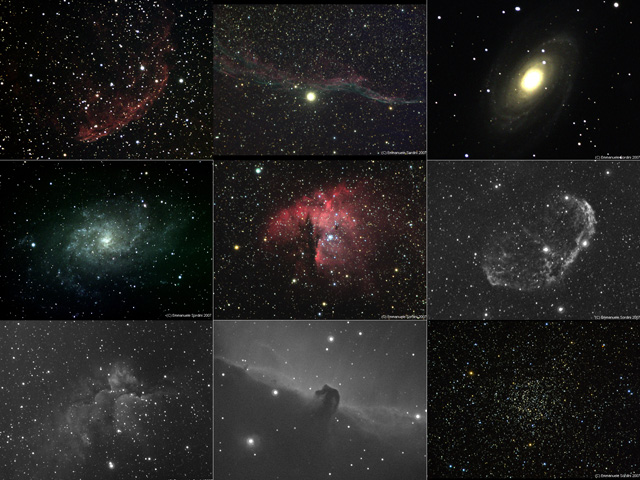“Nine objects of desire” is a title of an album by one of my favorite singers, Suzanne Vega.
However, in this case the term “round-up” would probably be more appropriate. No matter what you call it, to me it’s a nice set of deep-sky objects:
From last Sept. 07 to Sept 09, I took part in the St Barthelemy star party, which is the oldest in Italy, this year’s being the 16th edition in a row. It is held in the Alps at around 1600 m elevation, in a place renowned for the beauty of its landscapes and the transparency of its nights. After all, this spot high up in the mountains surrounded by sharp peaks is home to one of the biggest amateur observatories in the whole country.
Weather vagaries often haunt this Star Party, which takes place somewhen in September around new moon. However, this year we were treated with three beautiful days, with very mild temperatures during daytime and reasonable lows at night (hovering around 5-6 °C).
What’s more important, however, is that I really wanted to put my rig through its paces, and especially my CCD camera. Still being a rookie at CCD imaging, I was more interested in trying to image as many different objects as possibile.
As it turned out, in spite of some problems (flexures, autoguiding flaws, nice cirrus clouds causing the target star to be lost just to name a few), I came back home with a whole bunch of raw pictures. So, it wasn’t just a matter of setting my rig up correctly in the field, but also dealing with the post-processing phase.
Well, ’nuff said: below you’ll find my harvest of deep-sky objects. Here are the common technical details:
- Imaging scope: Skywatcher ED80
- Autoguiding scope: Synta 70/500 refractor
- Mount: Losmandy G11 with MicroGiga DA-2
- Guiding camera: Mintron WTW-12V1C-EX
- CCD Camera: Atik 16 HR, (always binned 1×1)
- Software: K3CCDTools for autoguiding, Maxim DL for camera control and image acquisition
- Calibration: no flats and no bias, only one single dark frame for each exposure length (5, 6 and 10 minutes)
- Filters: Astronomik H-alpha 13nm for luminance (nebulae) and Astronomik Type 2C LRGB filter set (luminance and colors for other objects)
Post-processing phase: image calibration and sum, dark frame subtraction and LRGB composition (if applicable) with Maxim DL; Adobe Photoshop for final preparation (e.g. curves, cropping, etc.). All exposure times are in minutes.
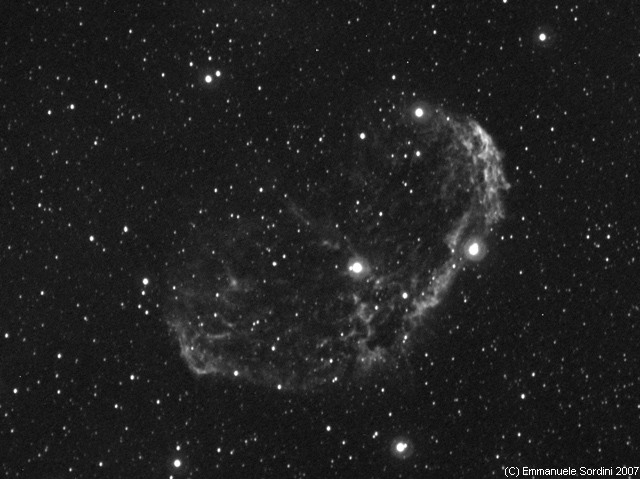
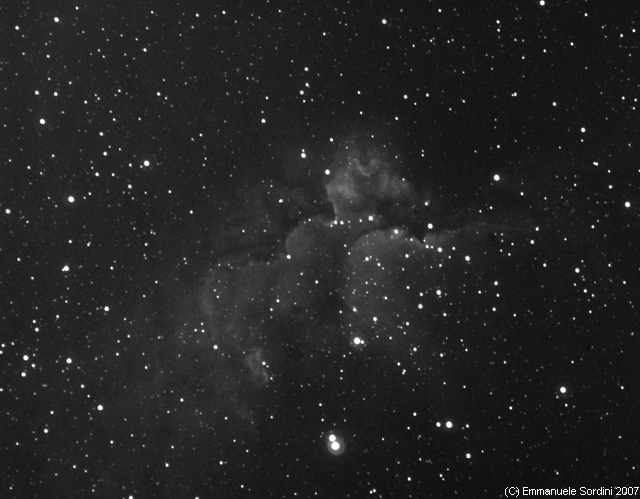
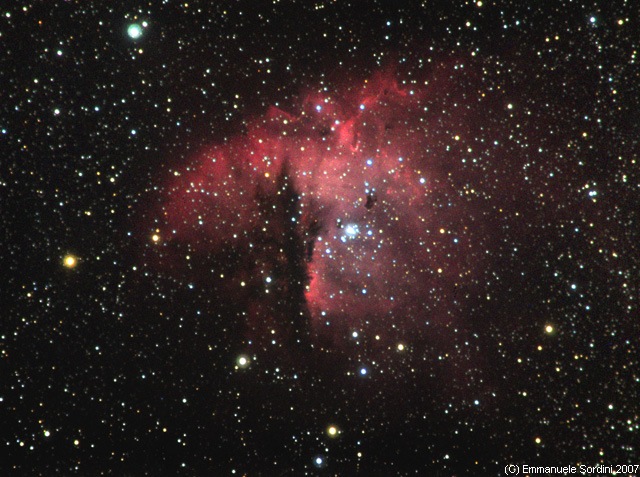
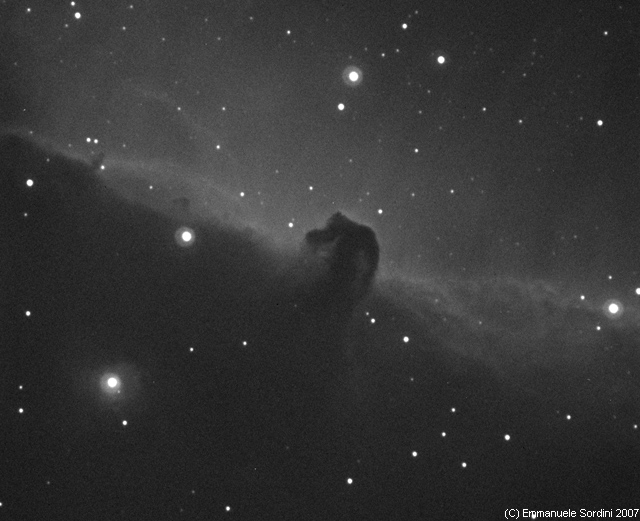
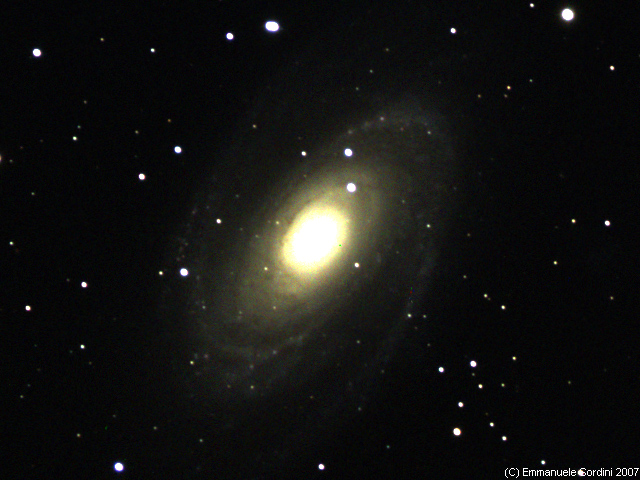
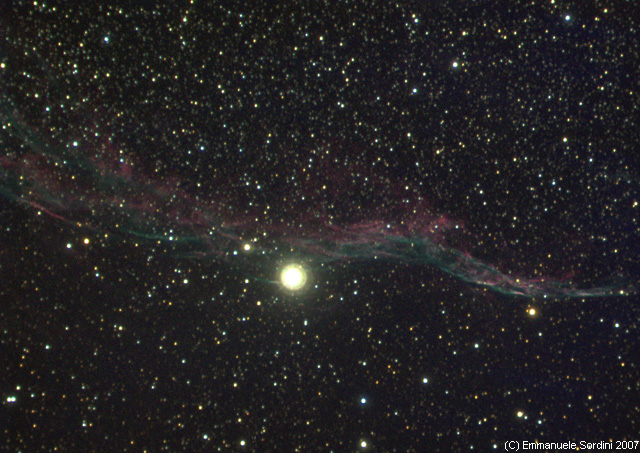
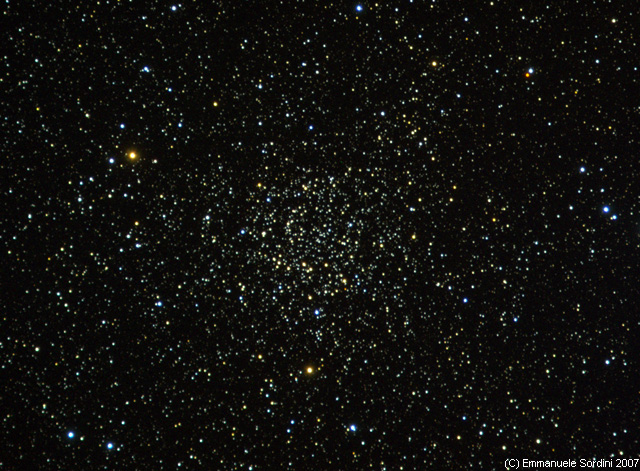
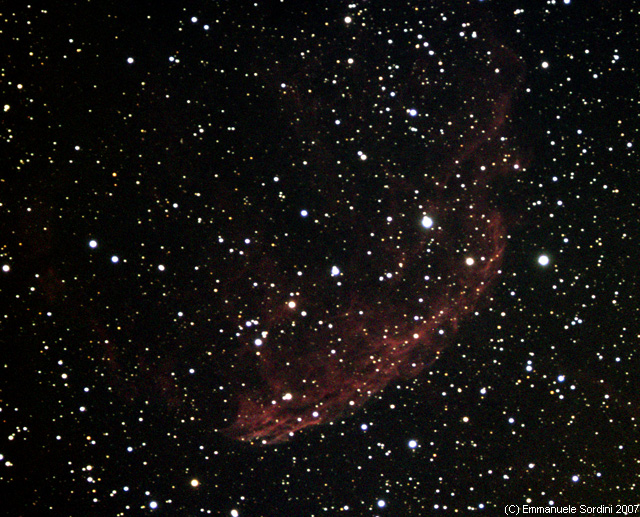
On the whole, I took more than 500 minutes’ worth of exposure times over almost 80 raw shots. The good ones (i.e. the ones used to compose the above images) amount to a grand total of almost 450 minutes.
As usual, every respect in my acquisition and processing techniques has got much room for improvement. But it’s not bad as a starter after all, is it? 🙂

